
The Battle of Gettysburg was fought July 1–3, 1863, in and around the town of Gettysburg, Pennsylvania, by Union and Confederate forces during the American Civil War. In the battle, Union Maj. Gen. George Meade's Army of the Potomac defeated attacks by Confederate Gen. Robert E. Lee's Army of Northern Virginia, halting Lee's invasion of the North. The battle involved the largest number of casualties of the entire war and is often described as the war's turning point due to the Union's decisive victory and concurrence with the Siege of Vicksburg.
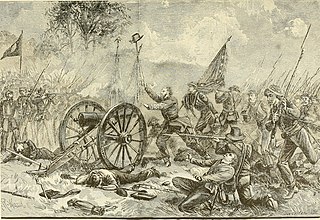
Pickett's Charge, also known as the Pickett–Pettigrew–Trimble Charge, was an infantry assault ordered by Confederate Gen. Robert E. Lee against Maj. Gen. George G. Meade's Union positions on the last day of the Battle of Gettysburg in the state of Pennsylvania during the Civil War.

The 1st Minnesota Infantry Regiment was the very first group of volunteers the Union received in response to the South's assault of Fort Sumter at the beginning of the United States Civil War. Minnesota's Governor Alexander Ramsey offered 1000 men to Lincoln immediately upon learning of the attack on the fort. He just happened to be in Washington when the news broke. Those men volunteered for a five-year commitment (1861–64) which was much longer than other states. During combat actions, the 1st Minnesota sustained substantial casualties at the battles of First Bull Run (20%) and Antietam (28%) and a staggering 82% at the Battle of Gettysburg, where the regiment's most famous actions occurred on the second day of the battle.

The Battle of Hoke's Run, also known as the Battle of Falling Waters or Battle of Hainesville, took place on July 2, 1861, in Berkeley County, Virginia as part of the Manassas Campaign of the American Civil War. Notable as an early engagement of Confederate Colonel Thomas J. Jackson and his Brigade of Virginia Volunteers, nineteen days before their famous nickname would originate, this brief skirmish was hailed by both sides as a stern lesson to the other. Acting precisely upon the orders of a superior officer about how to operate in the face of superior numbers, Jackson's forces resisted General Robert Patterson's Union forces briefly and then slowly retreated over several miles.
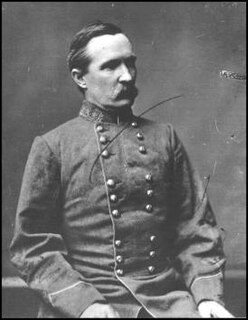
Henry Heth was a career United States Army officer who became a Confederate general in the American Civil War.
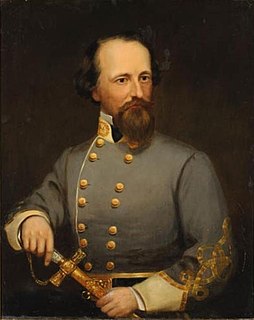
James Johnston Pettigrew was an American author, lawyer, and soldier. He served in the army of the Confederate States of America, fighting in the 1862 Peninsula Campaign and played a prominent role in the Battle of Gettysburg. Despite starting the Gettysburg Campaign commanding a brigade, Pettigrew took over command of his division after the division's original commander Henry Heth was wounded. In this role, Pettigrew was one of three division commanders in the disastrous assault known as Pickett's Charge on the final day of Gettysburg. He was badly wounded during the assault and was later mortally wounded during a Union attack while the Confederates retreated to Virginia near Falling Waters, West Virginia, dying several days later.
John Mercer Brockenbrough was a farmer and a Confederate colonel in the American Civil War.
The 8th Ohio Infantry Regiment was an infantry regiment in the Union Army during the American Civil War. It served in the Eastern Theater in a number of campaigns and battles, but perhaps is most noted for its actions in helping repulse Pickett's Charge during the Battle of Gettysburg.
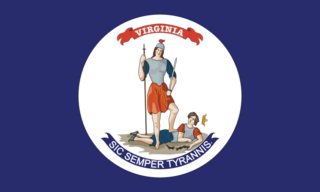
The 33rd Virginia Infantry Regiment was an infantry regiment raised in the Commonwealth of Virginia for service in the Confederate States Army during the American Civil War. It was a part of the famed "Stonewall Brigade," named for General Stonewall Jackson.

James Jay Archer was a lawyer and an officer in the United States Army during the Mexican–American War. He later served as a brigadier general in the Confederate States Army (CSA) during the American Civil War.
Corporal Joseph H. De Castro, was the first Hispanic American to be awarded the United States's highest military decoration for valor in combat—the Medal of Honor—for having distinguished himself during Pickett's Charge in the Battle of Gettysburg of the American Civil War.
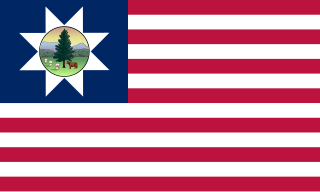
The 2nd Vermont Brigade was an infantry brigade in the Union Army of the Potomac during the American Civil War.

The Texas Brigade was an infantry formation of the Confederate Army that distinguished itself in the American Civil War. Along with the Stonewall Brigade, they were considered the Confederate Army's shock troops. It fought in every major battle of the Eastern Theater except Chancellorsville.

The 26th North Carolina Infantry Regiment was an infantry regiment of the Confederate States Army during the American Civil War. The regiment was composed of ten companies that came from various counties across North Carolina and Virginia. It is famous for being the regiment with the largest number of casualties on both sides during the war.

The Third Corps, Army of Northern Virginia was a unit of the Provisional Army of the Confederate States.

James Keith "Jimmy" Marshall was a Confederate Army officer during the American Civil War. Marshall commanded the wounded J. Johnston Pettigrew's brigade during Pickett's Charge at the Battle of Gettysburg and died during the assault.

The 18th Georgia Infantry Regiment was an infantry regiment in the Confederate Army during the American Civil War. Originally brigaded with the three Texas regiments of John Bell Hood's Texas Brigade, it was transferred to Thomas R.R. Cobb's Georgia Brigade after the Battle of Antietam in late 1862. After General Cobb was mortally wounded at the Battle of Fredericksburg, the original colonel of the 18th Georgia, William T. Wofford, became Brigadier General of the Georgia Brigade.

The 19th Virginia Infantry Regiment was an infantry regiment raised in Virginia for service in the Confederate States Army during the American Civil War. It fought mostly with the Army of Northern Virginia.
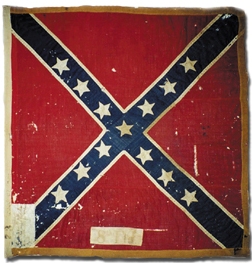
The 8th Florida Infantry Regiment was a unit of the Confederate States Army during the American Civil War. Serving in the Army of Northern Virginia throughout the war; it fought in most battles of the Eastern Theater.

Edward Claxton Edmonds was an American military teacher and colonel in the Confederate Army during American Civil War. He commanded the 38th Virginia Infantry and was killed near Gettysburg when he led the regiment on the offensive during Pickett's Charge.



















